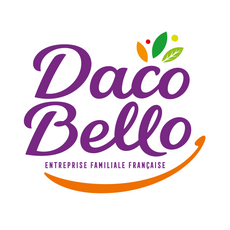A traceable and responsible almond
California is the largest almond production area in the world due to its climate favorable to its development. However, this region faces significant ecological risks linked to the loss of biodiversity and the drought which affects its orchards.
We take the ecological and societal impact of our activity seriously and this is why we have decided to commit ourselves in complete transparency, thanks to our partner, to sustainable and responsible almond production.
L'amande Californienne, son cycle de vie
La floraison des amandiers se déroule entre février et mars. L'amande se forme, ensuite la chair du fruit se durcit et forme une coque protectrice autour du noyau : sa graine gonfle progressivement.
En août, la peau verte qui enveloppe la coque s'ouvre, laissant l'amande sécher au soleil. Pour la récolte, des "secoueurs" mécaniques font tomber les fruits mûrs de l'arbre vers le mois d'octobre. Il s'agit de l'unique récolte annuelle d'amande jusqu'à l'automne prochain. C'est pour cela que la pollinisation, l'irrigation et la bonne gestion de la culture sont essentiels tout au long de l'année.

Son utilisation raisonnée de l'eau


La préservation de la biodiversité
La floraison des amandiers se déroule entre février et mars. Nos partenaires prennent grand soin de respecter les normes de sécurité pour leurs abeilles. Ils sont certifiés Bee Friendly, le label des agriculteurs engagés pour la protection des pollinisateurs. Concrètement ce sont 5% des vergers qui sont dédiés à l'accueil des abeilles dans leur habitat naturel.
Aussi, des plantes ont été plantées dans les champs afin d'offrir un habitat à nos amis pollinisateurs et d'améliorer la santé du sol.


La réduction de l'empreinte carbone
La réduction carbone est au cœur des préoccupations de nos partenaires : cela est possible grâce à des technologies innovantes.
Par exemple, 14% de notre énergie provient aujourd'hui de panneaux solaires. 2.7% des véhicules qui circulent sur nos vergers roulent à l'électrique ou sont hybrides.


La réduction des déchets et pesticides
Nos partenaires minimisent les déchets en maximisant les ressources disponibles et en cherchant des moyens de réutiliser les matériaux. En élaguant les arbres pour amender les sols, nous réduisons notre empreinte carbone et le besoin en engrais synthétiques. Ils réutilisent également les coques d'amandes qui sont une excellente source d'alimentation pour les vaches laitières et d'autres animaux d'élevage.
Des méthodes alternatives sont également mises en place. Plusieurs boîtes à hiboux ont été installées, elles sont une lutte naturelle contre les rongeurs. Des tapis permettent de limiter naturellement les mauvaises herbes autour des amandiers et la technologie est également utilisée pour réduire l'utilisation d'herbicides grâce à des outils d'applications précises et raisonnées.

Le bien-être des employés
Leurs engagements valent également sur le plan social : une juste rémunération de la main d'œuvre agricole est mise en place. Des aides sont aussi apportées au niveau de la formation ou de l'éducation et depuis le début de la crise sanitaire, des mesures de sécurité et d'hygiène sont instaurées pour préserver tous les employés et leurs familles.




